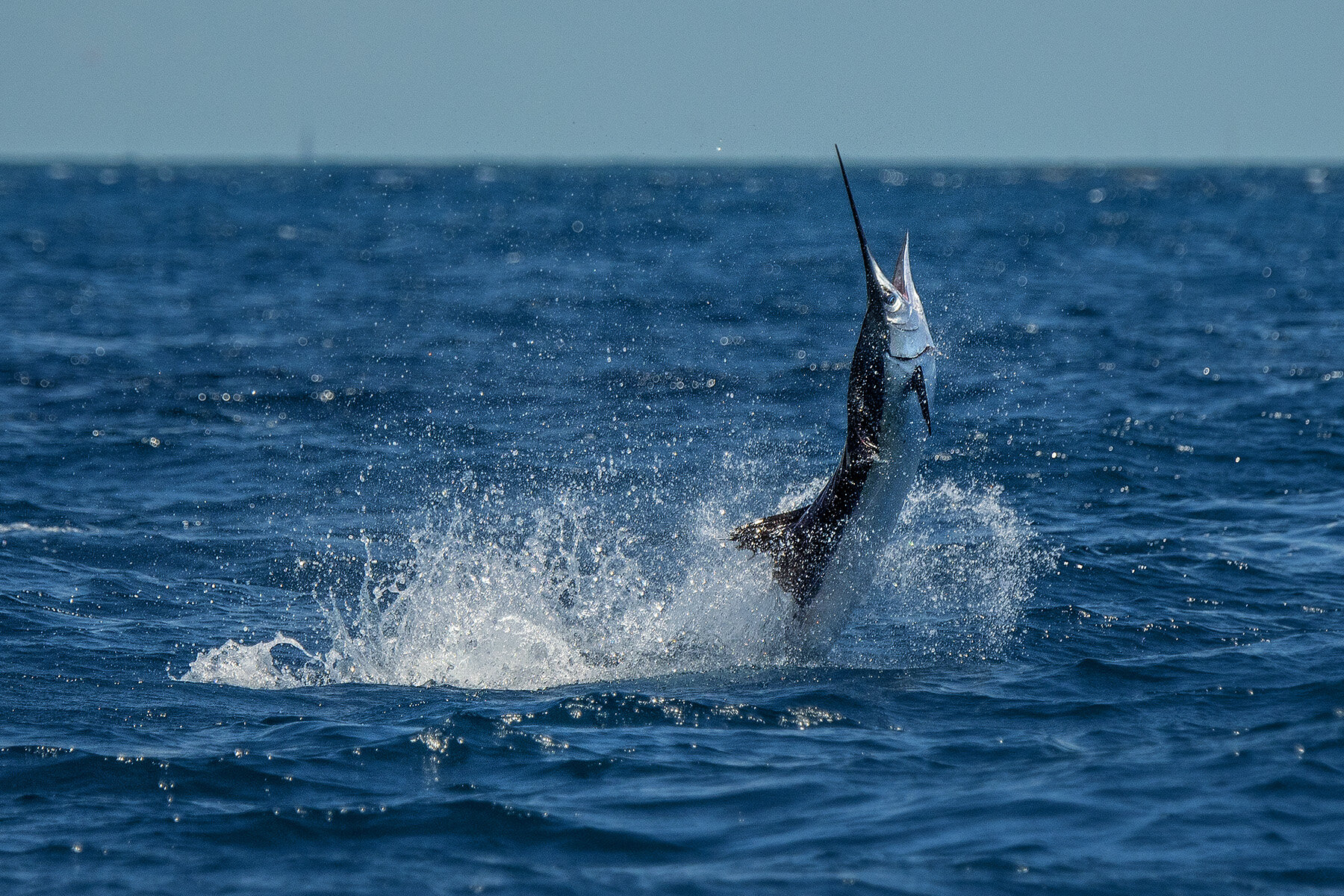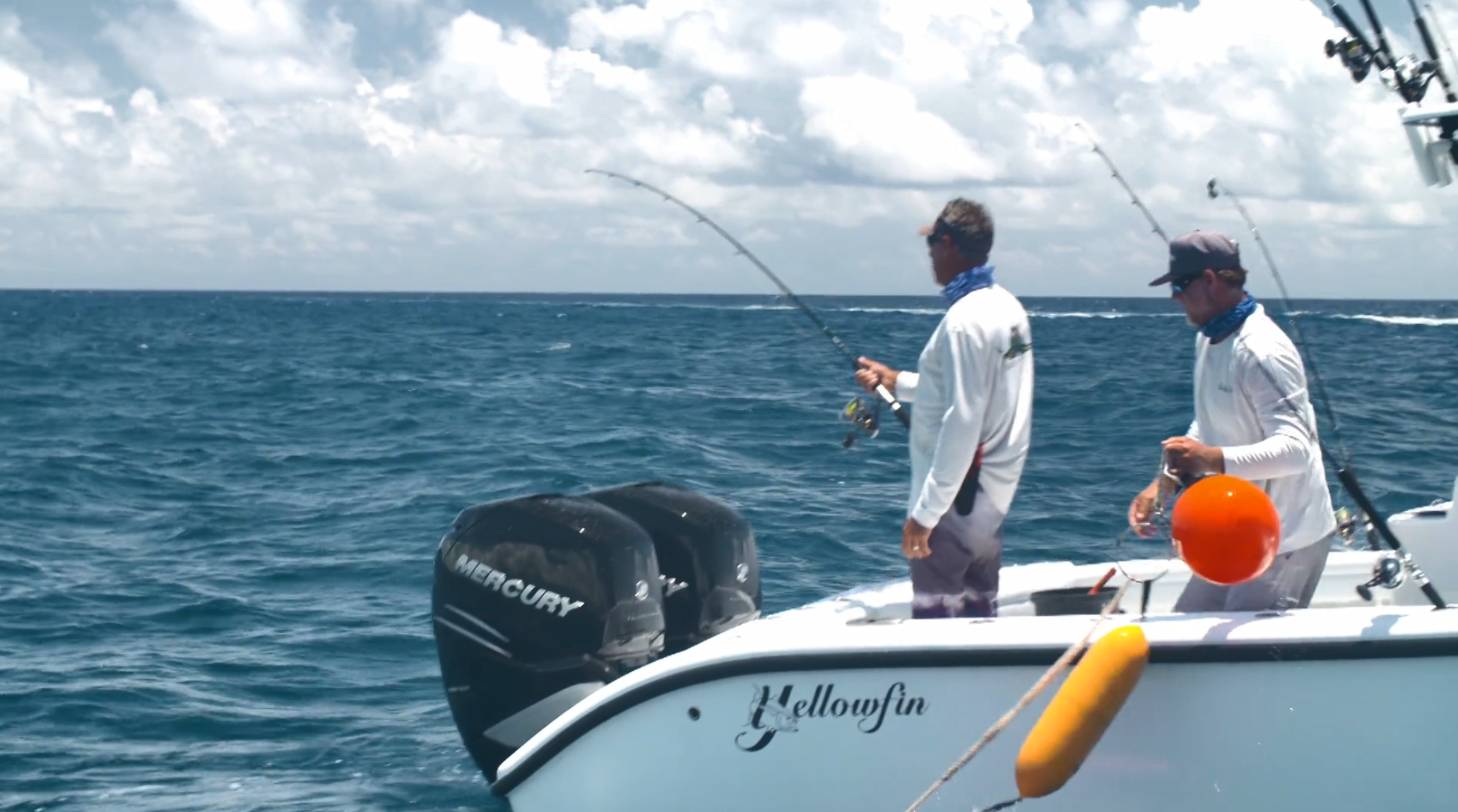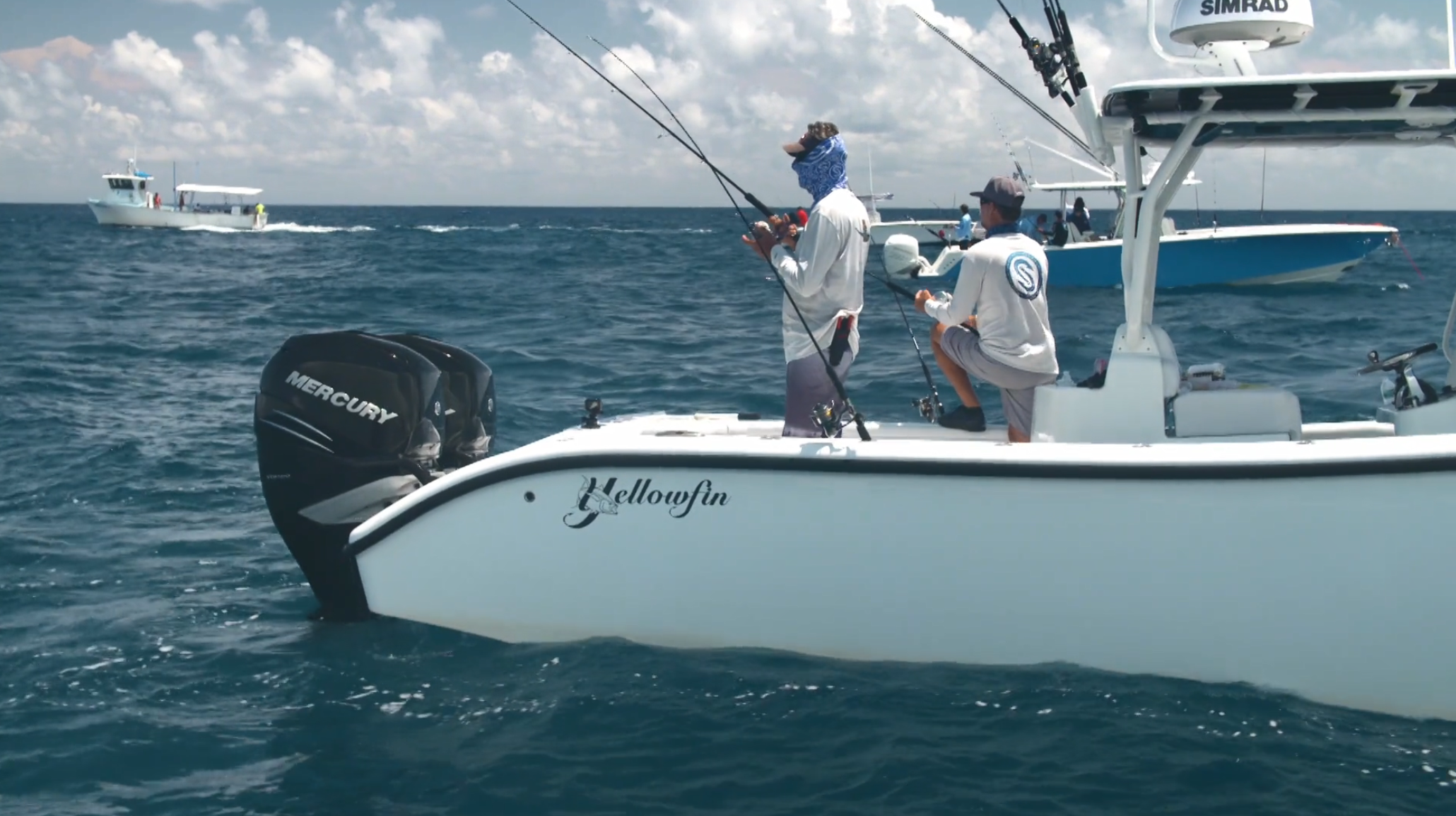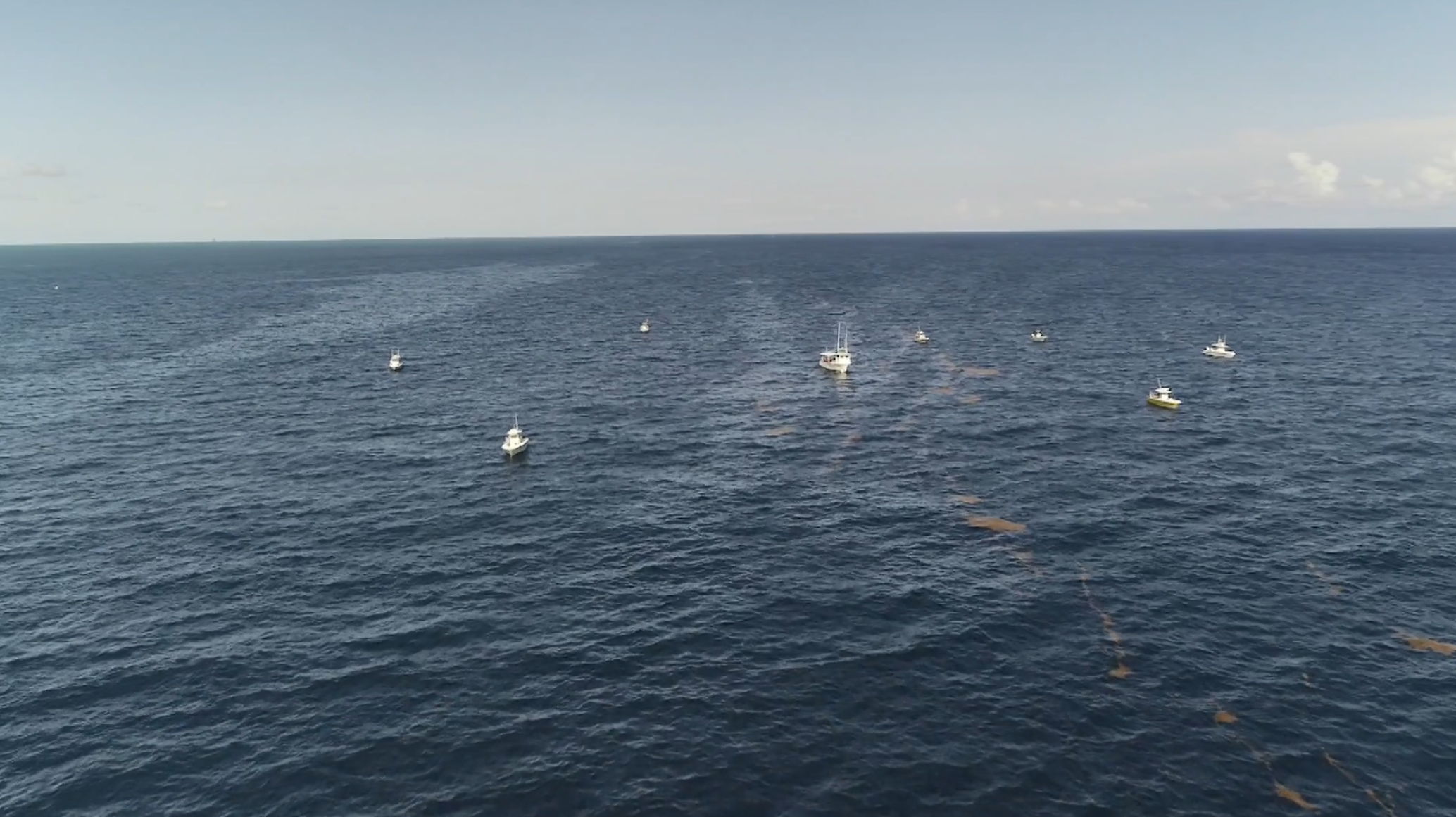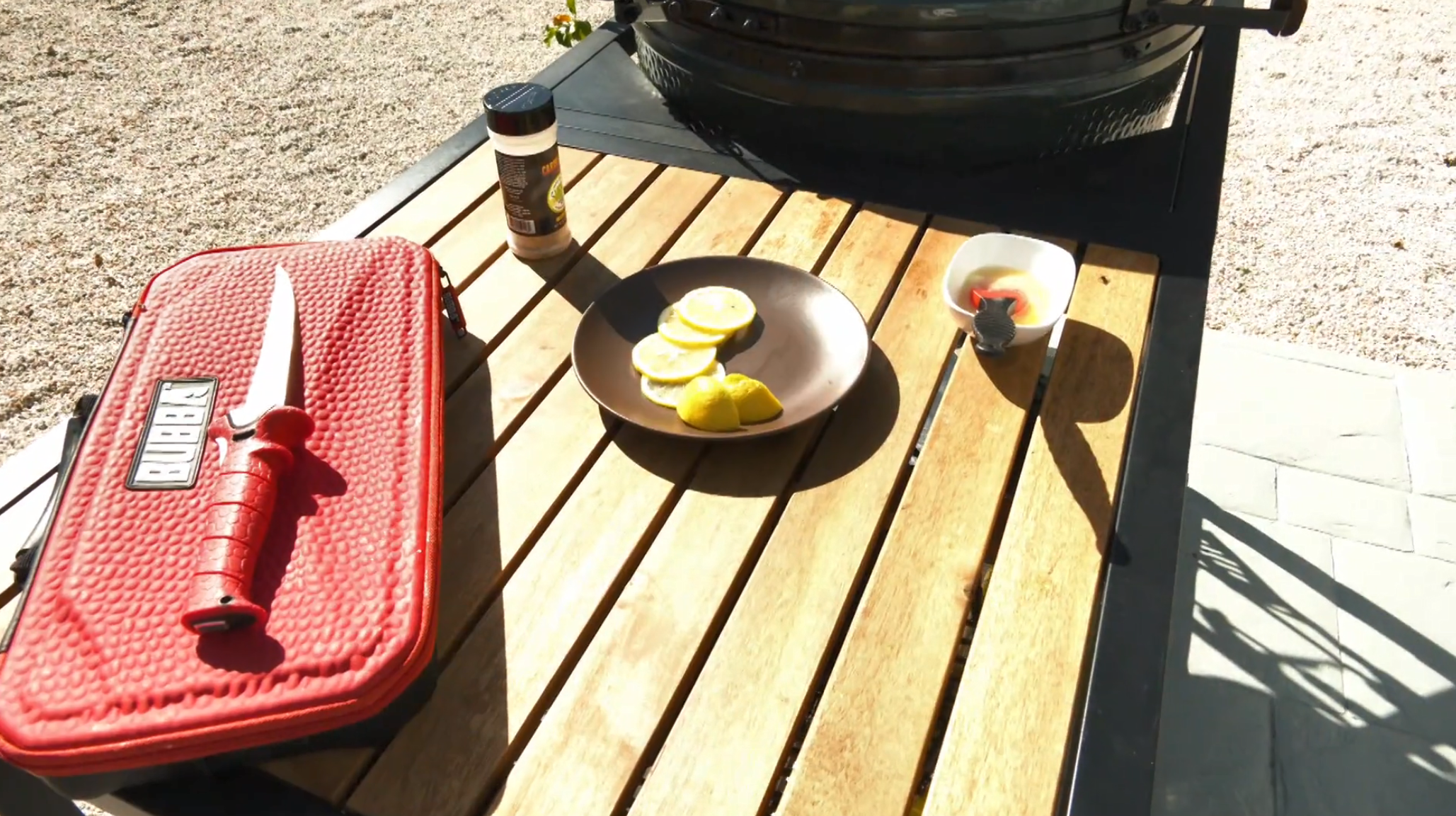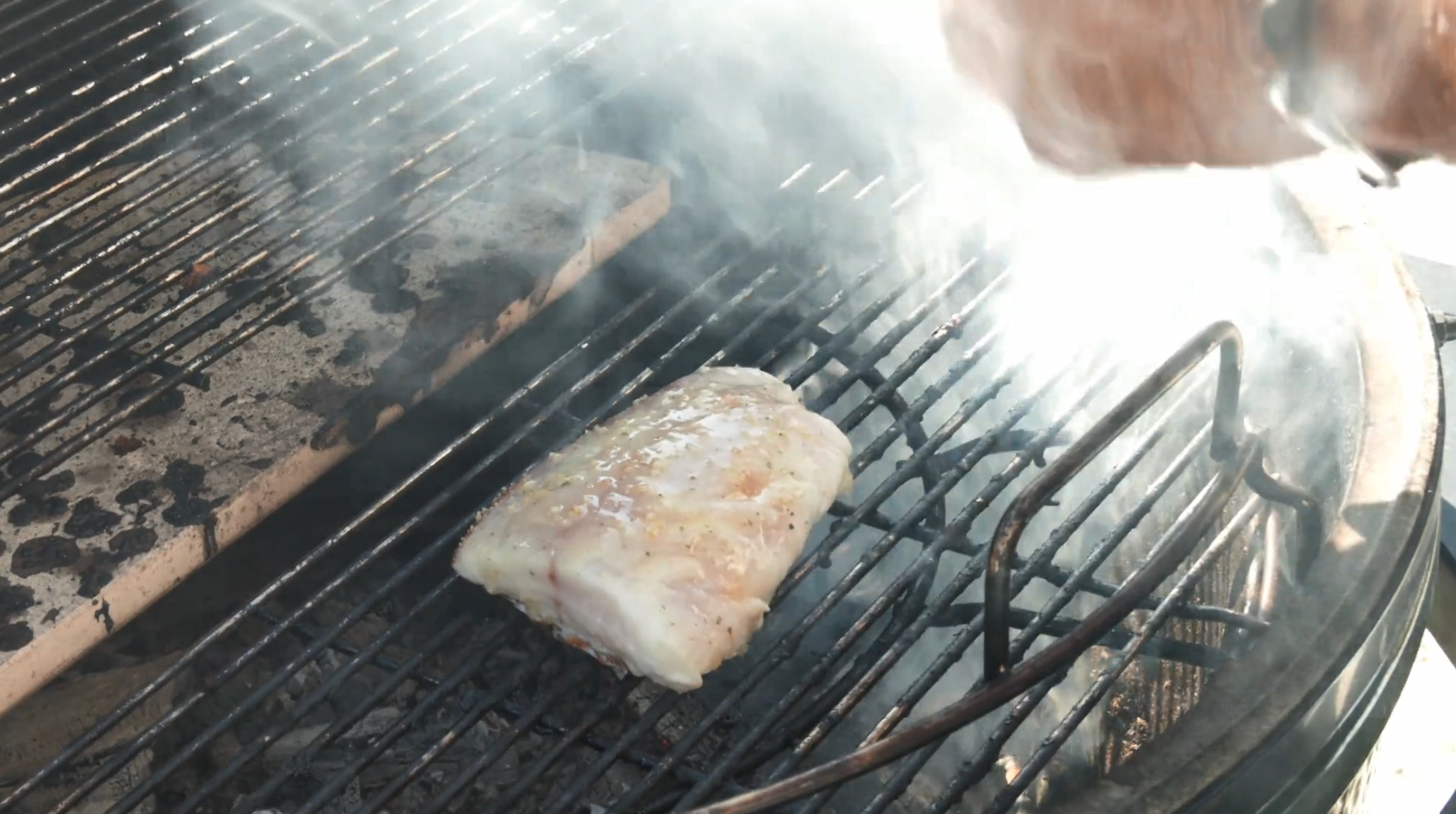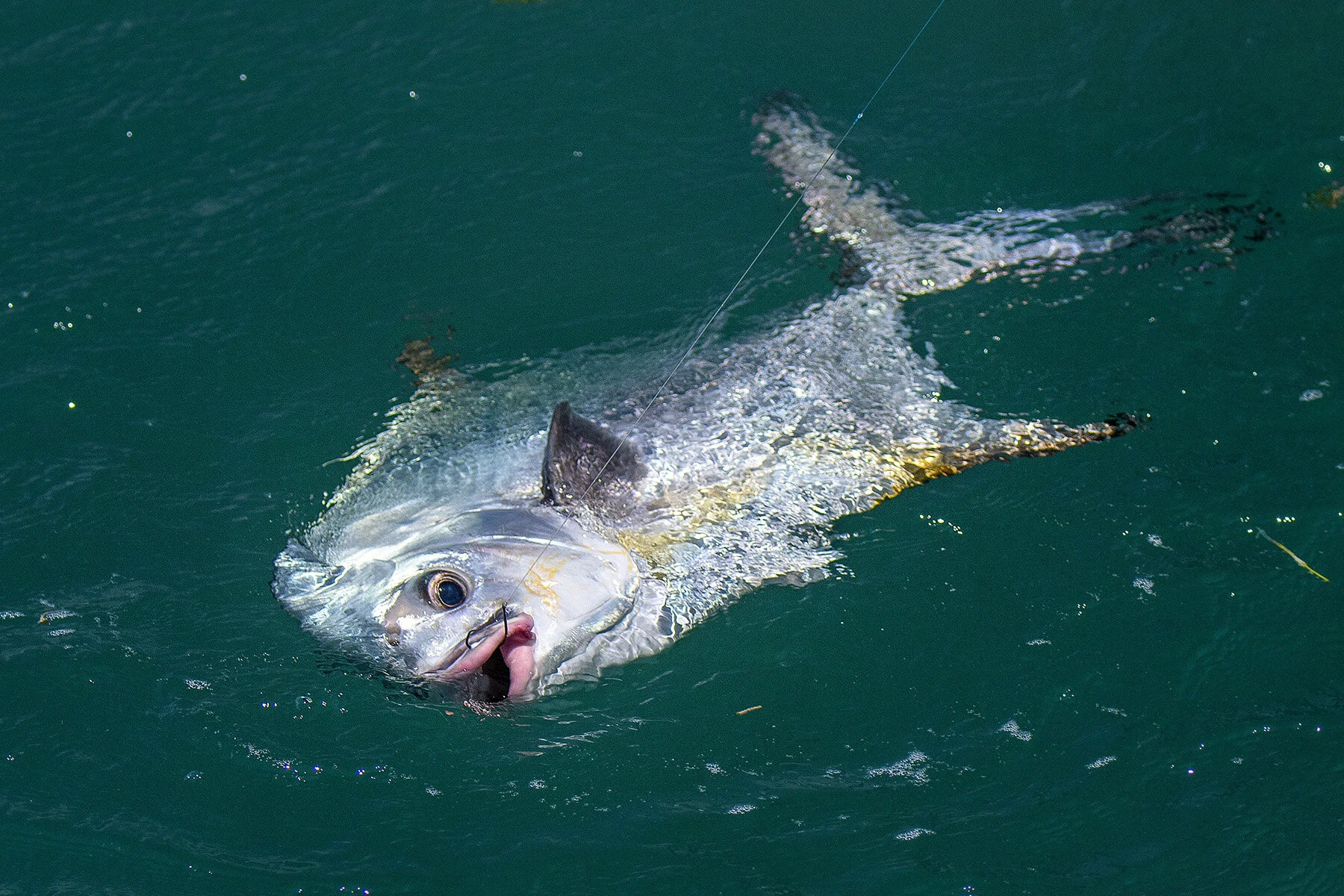How to Set Up Your Anchor Line for Sailfishing in the Keys
written by Evan Anderson
The Florida Keys provide anglers with an incredibly diverse population of gamefish and a wide variety of environments to fish in. A guide can take a crew to the narrow channels and flats of the Everglades one day, spend some time in the Gulf the next, and round the trip out with some deep offshore water afterward. “It’s a fish factory,” comments Capt. Steve Rodger, Co-Host of Into the Blue, “All you’ve got to do is look through the record books, and there’s more records of every species being caught here in the Keys than anywhere else.”
Because of this constantly changing environment, a captain has to be prepared to adapt to the changes quickly and efficiently while being respectful to the other boats in the area, of which there will most likely be many. In this episode of Into the Blue, Captains Steve Rodger and Scott Walker demonstrate how to set up your anchor line in a way that makes adaptation easier (with practice) as well as how to be courteous when you roll up to a spot with a group of boats already fishing there. Plus, Walker gives us his favorite mutton recipe for the grill.
SE Multimedia | 2020
ANCHORING ON THE REEF
The two hosts start their day all set up for chasing tarpon. But when their efforts are thwarted by the worm hatch (which makes the tarpon finicky, according to Walker), they decide to pick up and head offshore to try their luck on the reef.
“When you’re fishing on the ocean side here in the Keys, it’s very important to have an anchor setup that works well for the situation.”
Pulling up to the reef, Rodger begins the process of them getting anchored in the right place. “When you’re fishing on the ocean side here in the Keys, it’s very important to have an anchor setup that works well for the situation,” explains Rodger, “For us, I have a section of 400ft and at that I have a stopping point with a loop, and then I have another 200ft section in the box for when we’re in the deeper water. I’ll just add that to the 400.”
Rodger advocates having a longer anchor line when fishing near structure such as a reef so you can fish the edge of it without getting hung up and potentially losing your fish on it. “In this instance,” he says, “we were probably in 120ft of water, I had probably 300ft of line out...and with that I had my ball ready to go.”
USING AN ANCHOR BALL
“As soon as Steve suggested we go mutton-fishing, I knew immediately we were going to be fishing for muttons where the sailfish were,” comments Walker with a chuckle, “I know we were setting up for mutton, but I was also setting up for a sailfish the whole time.” And it’s not long before Walker has a sailfish on the end of his line.
“You always want to catch everything that you hook...You don’t want to lose it to something as simple as another fisherman’s line or anchor line.”
The problem here is that, because there are other boats in the area, they need to maneuver their boat so they don’t get tangled up with anyone else. “You always want to catch everything that you hook,” says Walker, “You don’t want to lose it to something as simple as another fisherman’s line or anchor line. The line’s taught, and with the right amount of drag another fishing line rubbing against it could cut the line.”
But they’re anchored with 300ft. of rode (anchor line) out. There’s no way you can haul all that up quickly enough to take care of the sailfish, which is why Rodger uses an anchor ball, a buoy attached to quick releases at intervals along the line that keeps the rode floating on the surface. This allows him to disconnect his boat from the anchor, do what they need to do to bring in the sailfish, and then return to where they started and reattach to the anchor.
According to Rodger, how many anchor balls you attach depends on the current. “The current in the morning was running so hard I was a little nervous,” says Rodger, “I clipped on just about every ball I had in the boat, because when the Gulf Stream is pushing that hard...I’ve seen it before where someone has a little ball, throws it over the side, and it’s gone. The current sucks it down.” He adds, “Those fish use that current to their advantage and when they get hooked they take off.
ETIQUETTE
Rodger called the Keys a “fish factory”, and that’s not an exaggeration nor is it a secret. Their incredibly diverse range of gamefish an angler can catch draws a lot of traffic every year, so it’s almost guaranteed that you’ll be fishing alongside other boats at some point in the day. If you want to have a good day on the water, you have to treat the other boats and their crews with respect. “For me, etiquette is always the key,” says Rodger, “You don’t want to anchor where your anchor is going to impede [the other boats’] ability to fish.”
“You want to give everybody some space and get in line so your chum is all working together as opposed to working against each other.”
It’s an unfortunately common occurrence that a boat will anchor too close to another, and as a result the neighboring boat will lose a fish because the line got wrapped up in the other boat’s anchor line. Fishing captains are notoriously territorial and unforgiving, so give the boats around you plenty of space.
In addition to keeping your distance, you also don’t want to anchor behind someone, according to Rodger. “You want to try to get in line with a lot of guys,” says Rodger, “you don’t want to get behind somebody, you don’t want to anchor in their chum slick…You want to give everybody some space and get in line so your chum is all working together as opposed to working against each other.”
SCOTT’S SPECIALTY MUTTON RECIPE
With a box full of beautiful mutton snappers, Rodger and Walker head back to Ocean’s Edge Resort and Marina. As they process their catch, made simple with their Bubba Blade which slices right through the meat with ease, Walker explains some of his favorite mutton recipes. “[Scott] loves to cook,” comments Rodger, “So whenever we’re targeting something you can eat, he is on it.”
SE Multimedia | 2020
“Half a mutton snapper will feed six people, easy, with leftovers.”
For Walker’s go-to meal for mutton snapper, he takes a fillet and places it scales-down on hot grill which he’s brought to 500 degrees F. Leaving the fish scales-down lets the fat and oil rise through the meat of the fillet, giving it more flavor. As the fish cooks, he bastes it with melted butter periodically before finally taking it off, squeezing some lemon juice on it, and serving it alongside fresh cut lemon slices.
“Half a mutton snapper will feed six people, easy, with leftovers,” says Walker with a beaming smile, “I’m gonna go home and make my wife and neighbors happy.”
To see these tips in action on this episode of Into the Blue, watch the full episode below. Follow @intothebluetv, @captscottwalker, and @steven.rodger on Instagram for more Into the Blue content as well as @waypointfish, @waypointsalt, @waypointboating, and @waypointtv.


